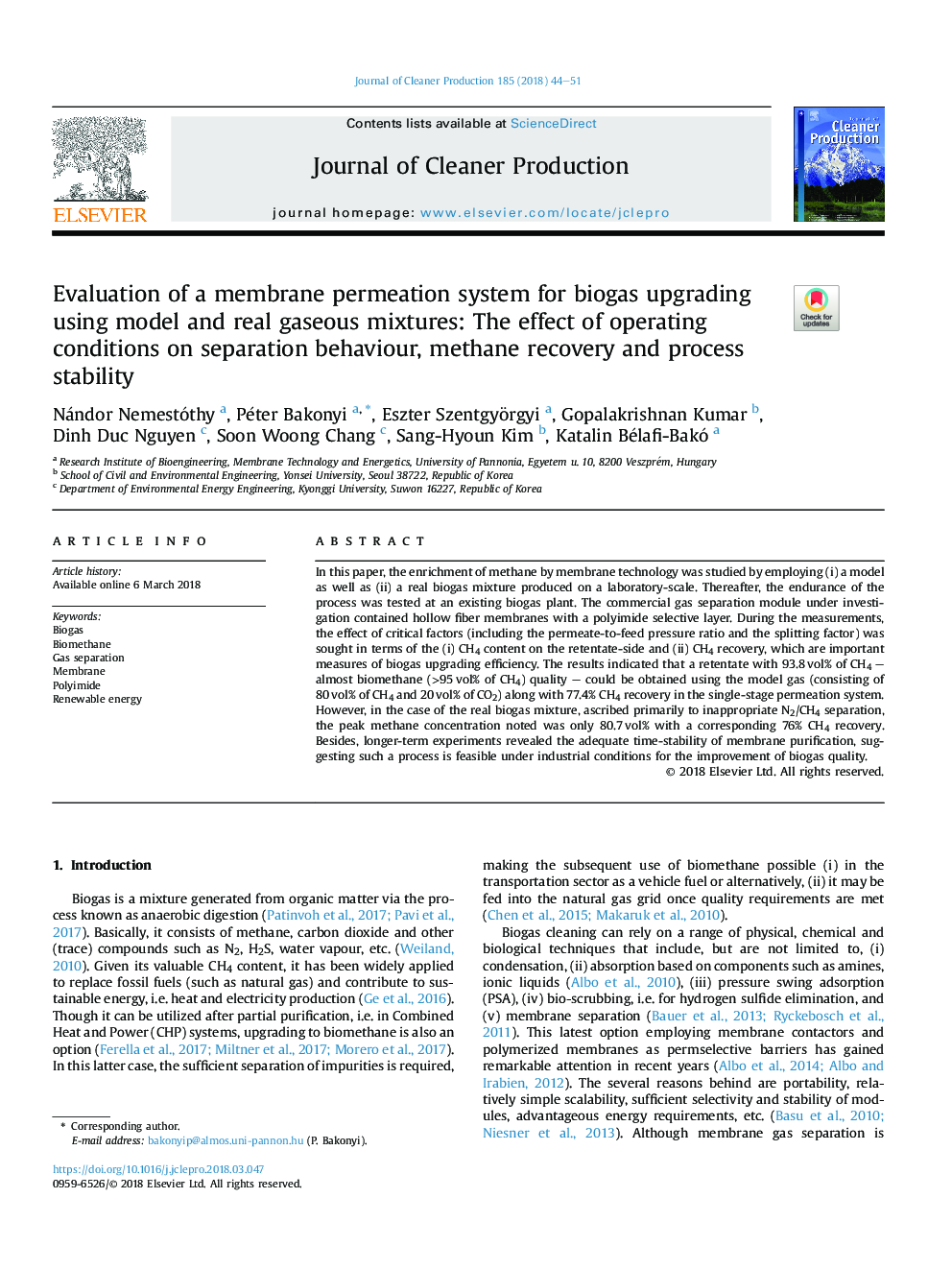| Article ID | Journal | Published Year | Pages | File Type |
|---|---|---|---|---|
| 8096372 | Journal of Cleaner Production | 2018 | 8 Pages |
Abstract
In this paper, the enrichment of methane by membrane technology was studied by employing (i) a model as well as (ii) a real biogas mixture produced on a laboratory-scale. Thereafter, the endurance of the process was tested at an existing biogas plant. The commercial gas separation module under investigation contained hollow fiber membranes with a polyimide selective layer. During the measurements, the effect of critical factors (including the permeate-to-feed pressure ratio and the splitting factor) was sought in terms of the (i) CH4 content on the retentate-side and (ii) CH4 recovery, which are important measures of biogas upgrading efficiency. The results indicated that a retentate with 93.8â¯vol% of CH4 - almost biomethane (>95â¯vol% of CH4) quality - could be obtained using the model gas (consisting of 80â¯vol% of CH4 and 20â¯vol% of CO2) along with 77.4% CH4 recovery in the single-stage permeation system. However, in the case of the real biogas mixture, ascribed primarily to inappropriate N2/CH4 separation, the peak methane concentration noted was only 80.7â¯vol% with a corresponding 76% CH4 recovery. Besides, longer-term experiments revealed the adequate time-stability of membrane purification, suggesting such a process is feasible under industrial conditions for the improvement of biogas quality.
Related Topics
Physical Sciences and Engineering
Energy
Renewable Energy, Sustainability and the Environment
Authors
Nándor Nemestóthy, Péter Bakonyi, Eszter Szentgyörgyi, Gopalakrishnan Kumar, Dinh Duc Nguyen, Soon Woong Chang, Sang-Hyoun Kim, Katalin Bélafi-Bakó,
